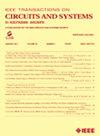质子交换膜燃料电池系统氧过剩比的扰动观测器自适应动态表面控制
IF 4.9
2区 工程技术
Q2 ENGINEERING, ELECTRICAL & ELECTRONIC
IEEE Transactions on Circuits and Systems II: Express Briefs
Pub Date : 2025-02-10
DOI:10.1109/TCSII.2025.3540486
引用次数: 0
摘要
近年来,质子交换膜燃料电池(PEMFC)系统因其高功率密度和零排放特性而成为一种有前景的可持续能源。然而,这些系统对氧过剩比(OER)的变化非常敏感,这直接影响了它们的效率和寿命。由于系统固有的非线性、模型的不确定性和对外部干扰的敏感性,OER的控制面临着巨大的挑战。为了解决这些挑战,我们提出了一种带有干扰观测器的自适应动态表面控制(ADSCDOB)方法来减轻不利影响并提高控制精度。采用非线性方法设计干扰观测器,有效地估计不确定性和外部干扰。ADSCDOB方法集成了自适应动态曲面控制技术,实现了鲁棒控制,同时克服了传统反演方法典型的“复杂性爆炸”问题。通过理论分析,严密地建立了闭环系统的稳定性。仿真验证了ADSCDOB方法的有效性,证明了其在各种操作条件下的快速响应、最小误差和鲁棒稳定性。本文章由计算机程序翻译,如有差异,请以英文原文为准。
Adaptive Dynamic Surface Control With Disturbance Observer for Oxygen-Excess Ratio of Proton Exchange Membrane Fuel Cell Systems
In recent years, proton exchange membrane fuel cell (PEMFC) systems have emerged as a promising sustainable energy source, recognized for their high power density and zero-emission characteristics. However, these systems are highly sensitive to variations in the oxygen-excess ratio (OER), which directly impacts their efficiency and lifespan. Controlling the OER presents significant challenges due to the system’s inherent nonlinearities, model uncertainties, and susceptibility to external disturbances. To address these challenges, we propose an adaptive dynamic surface control with a disturbance observer (ADSCDOB) method to mitigate adverse effects and enhance control accuracy. The disturbance observer is designed using a nonlinear approach to effectively estimate uncertainties and external disturbances. The ADSCDOB method integrates adaptive dynamic surface control technology, enabling robust control while overcoming the “explosion of complexity” problem typical of traditional backstepping methods. The stability of the closed-loop system is rigorously established through theoretical analysis. Simulations validate the effectiveness of the ADSCDOB method, demonstrating its rapid response, minimal error, and robust stability across various operating conditions.
求助全文
通过发布文献求助,成功后即可免费获取论文全文。
去求助
来源期刊
CiteScore
7.90
自引率
20.50%
发文量
883
审稿时长
3.0 months
期刊介绍:
TCAS II publishes brief papers in the field specified by the theory, analysis, design, and practical implementations of circuits, and the application of circuit techniques to systems and to signal processing. Included is the whole spectrum from basic scientific theory to industrial applications. The field of interest covered includes:
Circuits: Analog, Digital and Mixed Signal Circuits and Systems
Nonlinear Circuits and Systems, Integrated Sensors, MEMS and Systems on Chip, Nanoscale Circuits and Systems, Optoelectronic
Circuits and Systems, Power Electronics and Systems
Software for Analog-and-Logic Circuits and Systems
Control aspects of Circuits and Systems.

 求助内容:
求助内容: 应助结果提醒方式:
应助结果提醒方式:


